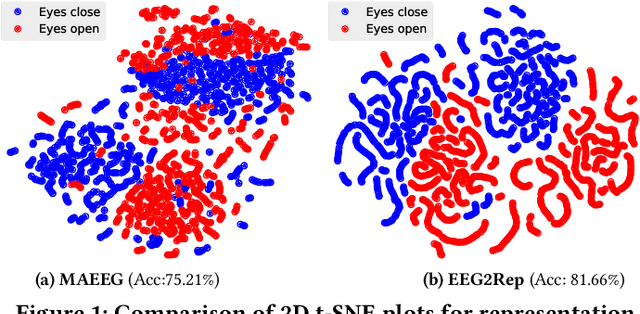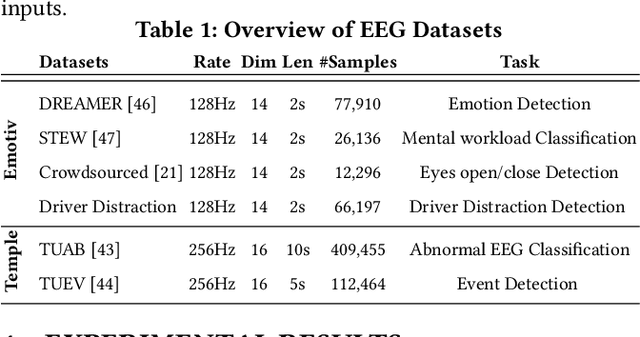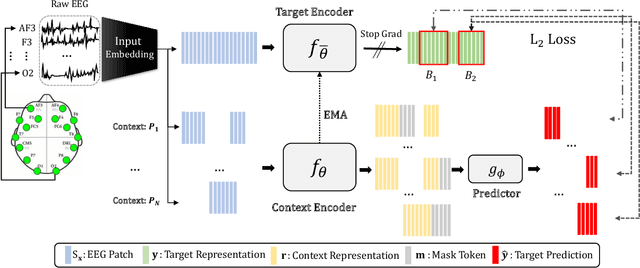Soheila Ghane
EEGM2: An Efficient Mamba-2-Based Self-Supervised Framework for Long-Sequence EEG Modeling
Feb 25, 2025Abstract:Deep learning has achieved significant progress in the development of electroencephalogram (EEG) foundation models, with Transformer-based architectures excelling at capturing long-range dependencies. However, their quadratic computational complexity presents challenges in memory efficiency, training, and inference speed, limiting their scalability and generalizability as a foundation model. In this paper, we propose EEGM2, a self-supervised framework based on structured state space duality (SSD) that overcomes these limitations. EEGM2 introduces three key innovations: (1) a reconstruction-based framework that captures both local and global EEG features through Mamba-2 structured state space models, (2) a spatiotemporal-aware loss function that enhances robustness to noise and preserves spectral information, and (3) a multi-branch receptive field input embedding strategy that improves cross-subject generalization and stability for EEG sequences of varying lengths. In comparison to traditional pretraining methods, on raw EEG or latent representation spaces, EEGM2 shows superior performance on long-sequence tasks, where conventional models struggle. Our experimental results on six EEG datasets validate that EEGM2 not only achieves state-of-the-art cross-domain accuracy but also reduces computational overhead, making it a more efficient solution for deployment on resource-constrained BCI devices.
EEG2Rep: Enhancing Self-supervised EEG Representation Through Informative Masked Inputs
Feb 17, 2024



Abstract:Self-supervised approaches for electroencephalography (EEG) representation learning face three specific challenges inherent to EEG data: (1) The low signal-to-noise ratio which challenges the quality of the representation learned, (2) The wide range of amplitudes from very small to relatively large due to factors such as the inter-subject variability, risks the models to be dominated by higher amplitude ranges, and (3) The absence of explicit segmentation in the continuous-valued sequences which can result in less informative representations. To address these challenges, we introduce EEG2Rep, a self-prediction approach for self-supervised representation learning from EEG. Two core novel components of EEG2Rep are as follows: 1) Instead of learning to predict the masked input from raw EEG, EEG2Rep learns to predict masked input in latent representation space, and 2) Instead of conventional masking methods, EEG2Rep uses a new semantic subsequence preserving (SSP) method which provides informative masked inputs to guide EEG2Rep to generate rich semantic representations. In experiments on 6 diverse EEG tasks with subject variability, EEG2Rep significantly outperforms state-of-the-art methods. We show that our semantic subsequence preserving improves the existing masking methods in self-prediction literature and find that preserving 50\% of EEG recordings will result in the most accurate results on all 6 tasks on average. Finally, we show that EEG2Rep is robust to noise addressing a significant challenge that exists in EEG data. Models and code are available at: https://github.com/Navidfoumani/EEG2Rep
 Add to Chrome
Add to Chrome Add to Firefox
Add to Firefox Add to Edge
Add to Edge